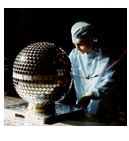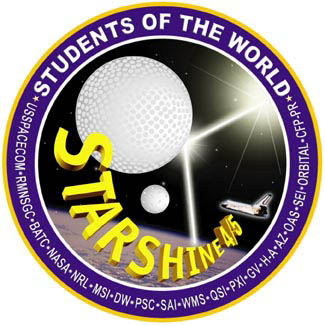

Michael A. Savell.
 
|
John Vasquez of the Naval Research
Laboratory prepares Starshine 1 for
vibration test. Photo by Michael A. Savell. |
|
STARSHINE 4/5 UPDATE - April 30, 2002
|
|
International Satellite Laser Ranging Network (ISLR) and the U.S. Space
Command. In addition, Starshine students will visually track the faint
flashes of sunlight reflecting from 1000 polished mirrors mounted on the
surface of Starshine 4. All these data will be combined to determine the
orbit of Starshine 4. On the other hand, Starshine 5 will have no mirrors and
will thus not be naked-eye visible, so we will depend totally on ISLR and
Space Command tracking for orbit determination of this satellite. By
comparing the orbital decay rates of Starshines 4 and 5, it will possible for
us to determine the density of the earth's atmosphere more precisely than
we've been able to do on previous missions.
 Click Here for 300 DPI version |
Return to Project Starshine Home Page
Last Updated: April 30, 2002